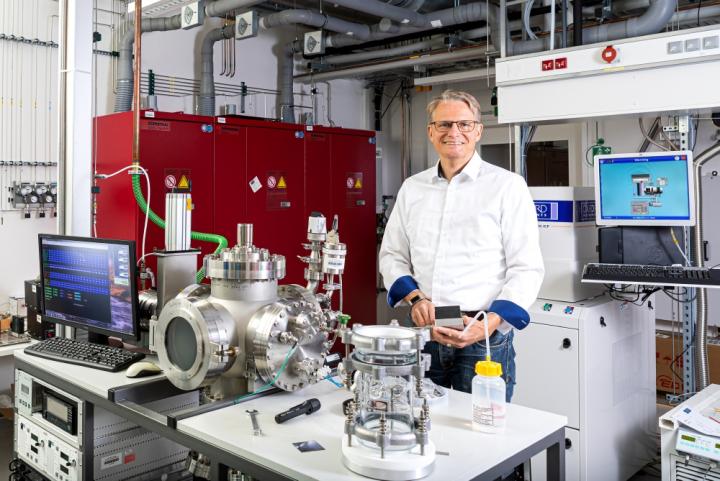
Credit: © Leipzig University, Swen Reichhold
Professor Grundmann is optimistic about the future: “In the longer term, we want this novel spectrometer to be used for a range of industrial applications.” He added that semiconductor physics is particularly well-suited to such projects.
The physicist’s optimism is justified by the wide range of potential applications for spectrometers. “They are used everywhere: in the food industry, in medicine, in the study of ecosystems,” said the scientist. For example, spectral analysis is used to investigate the properties of objects, tissues and even fabrics. The spectrometers used for this purpose tend to be relatively large and very expensive. Currently, the smallest commercially available instrument of this kind is about the size of an adult’s upper thumb – still far too large to fit into our ultra-slim smartphones. The UltraSPEC2 validation project aims to remedy this situation by developing an ultra-compact spectrometer.
According to Grundmann, the final product will be an extremely flat spectrometer only about one millimetre in length. The foundations for this have already been laid at the Felix Bloch Institute. Here Professor Grundmann’s team of physicists investigated the different properties of alloys of different semiconductors. Depending on the alloy used, it was possible to absorb different colours from the light spectrum. The focus now is on developing a combination of semiconductors where the so-called band gaps are capable of imaging entire spectral ranges. BMBF experts decided to grant the funding after being impressed by the results already achieved by Grundmann and his team in the preparatory phase of the project.
While currently spectrometers are mainly used in science and industry, the new spectrometer may well find its way to consumers. For example, the instrument could make it possible to check certain security features of banknotes in order to determine their authenticity. Customers could check in stores whether wool has been fully dyed, or whether toxins were used in the manufacture of a fabric. The small spectrometer could also be used to check pigment spots on the skin to see if they are harmless discolorations or if a more detailed examination for skin cancer is recommended. “The more applications there are and the more people use this spectrometer, the larger the databases that can be built from readings,” said Grundmann. Users would be able to not only supply data, but also download it from specific databases to their smartphones.
As the project continues, the team also plan to involve industry representatives. They can define specific requirements they have for the tiny spectrometer, letting the scientists ensure a more targeted development. As more and more new applications become possible thanks to the data generated by the spectrometer, the technology could become significantly more widespread. Grundmann is convinced that manufacturing costs will drop as more and more businesses adopt the spectrometer. This tiny piece of tech from Leipzig should then offer a genuine alternative to investing thousands of euros in large spectrometers – making it an affordable and useful tool for all.
###
Author: Joerg Aberger
Media Contact
Carsten Heckmann
[email protected]
Original Source
https:/



